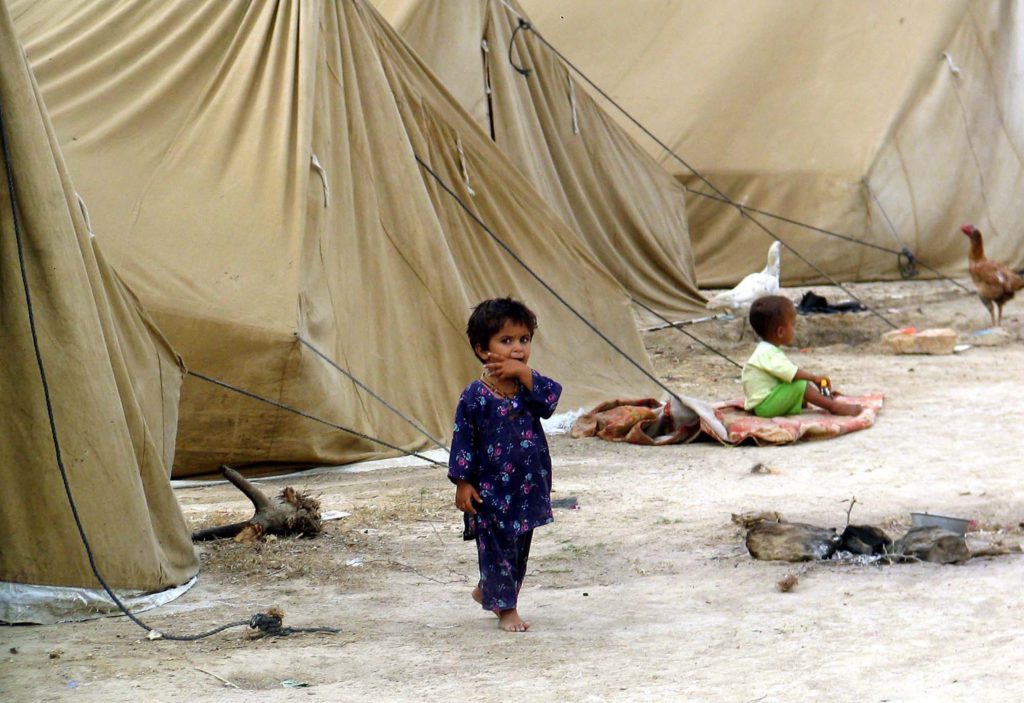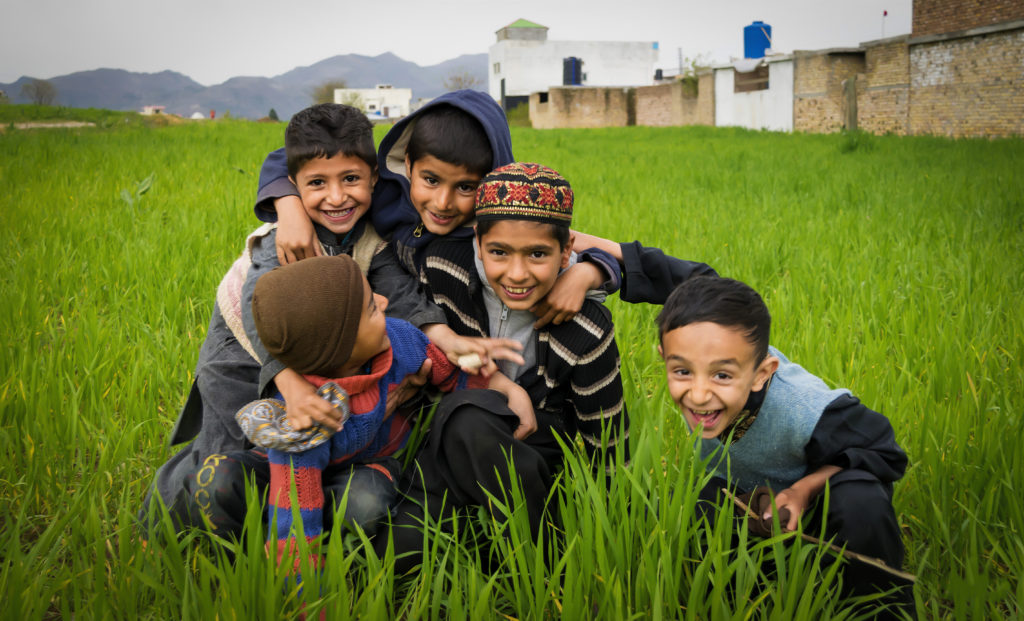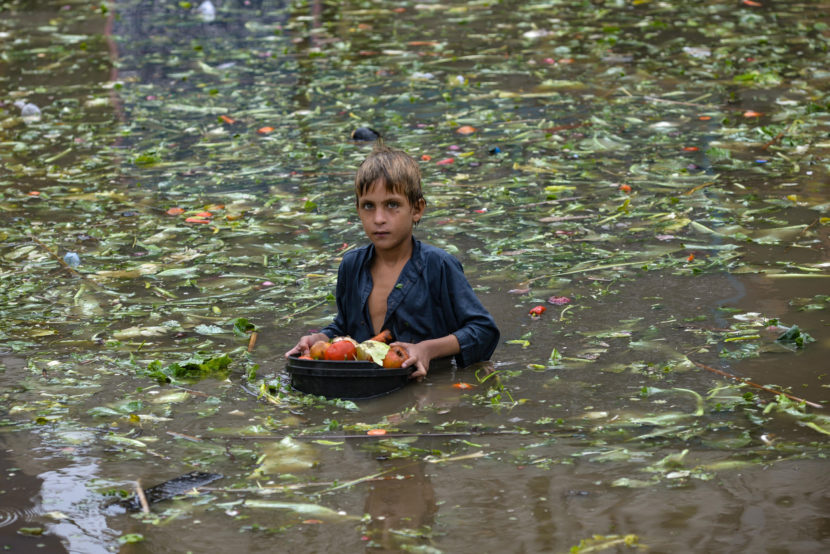Pakistan‘s history of devastating floods has had a severe impact on children, increasing their vulnerability to abuse and negatively affecting their mental health. While child protection laws exist, their implementation needs improvement to address the plight of displaced children and rehabilitate them.
In order to implement these efforts, it is crucial to provide psychosocial support to flood victims, particularly children. Furthermore, to effectively support vulnerable children affected by floods in Pakistan, humanitarian efforts must prioritize the development of child mental health policies and services, as well as investments in training and education.
Pakistan’s history of devastating floods
During the last century, Pakistan witnessed 28 devastating floods that took more than 13,000 lives over the span of 75 years. The government has been continuously critiqued for its slow response and lack of preventative measures. The extent of devastation caused by each new disaster continues to deepen, with physical destruction, loss of homes, and lives serving as a mirror to the unprecedented damage.
Humanitarian organizations are not able to cope with the growing issues, as the country is not only struggling with realizing children’s rights, but also with high unemployment, infrastructure damage, displacement, and an ongoing health crisis (Raza M, 2022).
Corruption coupled with environmental ignorance seems to pose the biggest danger in times to come. Pakistan is notoriously famous for not only frequent floods, but also devastating earthquakes, and terrorism. The earthquake in 2005 claimed the lives of 19,000 children.
The experts believe this disaster could have been avoided if the authorities didn’t turn a blind eye to illegal construction taking place all over the country. The passive and slow response of the government has perpetuated the impact of natural disasters, leaving millions of people affected (Raza M, 2022).
Child protection laws and their implementation
Despite the country’s recognition of every child’s right to education, as per Human Rights Watch data, five million children were out of school even before the pandemic hit in 2020. As a result, more than 45 million children were affected when schools were closed. Children are also frequent victims of bombings that occur throughout the country.
The government ratified the Convention on the Rights of the Child in 1990 but has not effectively implemented it, despite complying with regulations for children’s safety. This has resulted in gaps in the protection and promotion of children’s rights (Human Rights Watch, 2021).
The 2022 flooding in Pakistan was the latest natural disaster to strike the country, resulting in over two million children being out of school and claiming the lives of 615 children. Compounding the issue, approximately 10 million children who survived the flooding are now at great risk of infection due to inadequate access to clean water and poor living conditions (UNICEF, 2022). The floods in Pakistan have left millions in urgent need of potable liquid and healthcare due to contaminated water sources and damage to healthcare facilities.
Although the government deployed hundreds of millions of dollars to help the survivors, the country is in dire need of international aid. There has been a significant increase in the number of children suffering from respiratory diseases, while malnutrition rates have doubled. With the help of the Pakistani government, international organizations have been administering medicine and warm clothes, as well as setting up provisional classrooms and learning centers (Koulouthros Y, 2023).
The plight of displaced children and their rehabilitation

Children living in open-air camps in a country with a high incidence of abuse are now more vulnerable than ever and at risk of exploitation and mistreatment. Like Afghanistan, Pakistan has been unable to interrupt the transmission of poliovirus, making it an endemic environment.
This puts additional pressure on doctors to immunize children, who are already living in poor conditions. International organizations have offered psychological support to help children process the trauma. However, the scale of this disaster remains of biblical proportions (Koulouthros Y, 2023).
According to UNICEF, “by mid-January 2023, as many as 4 million children were still living near contaminated and stagnant flood waters, risking their survival and wellbeing” (UNICEF, 2023). In addition to their physical needs, the ongoing crisis that the government is failing to handle adequately can severely impact the mental well-being of children. The process of rebuilding what has been destroyed is projected to take several months or even years to complete (UNICEF, 2023).
The impact of floods on children’s mental health
Outcomes such as depression, anger-management issues, and substance abuse are potential effects of the traumatic experiences that children may face in the future. It is crucial to provide them with the necessary support to help them recover and minimize the risk of long-term negative impacts on their mental health.
By training volunteers and staff on therapists’ techniques and implementing child policies for protection during natural disasters, the government can take the lead in providing the necessary support for children’s mental health in times of crisis (Cheema et al., 2023).
Sadly, the humanitarian crisis has left women and children more vulnerable. The areas affected by floods are witnessing a surge in violence, with cases of abuse and exploitation becoming increasingly common. Other factors, such as age, ethnicity, and religion also influence the way women and children are treated in a country where human rights were already severely curtailed. Shelters have unfortunately become breeding grounds for abusers to exploit vulnerable women and children, offering basic necessities like food and medicine in exchange for their involvement in illicit activities (Soomar M S. et al., 2023).
Paving the path to a better future for Pakistani children
To address the issue of exploitation and abuse during natural disasters, the government of Pakistan needs to conduct a comprehensive research study at both local and national levels. This research will help to identify the needs of the affected population, particularly women and children, and to develop appropriate policies and interventions to protect them.
Additionally, there should be a concerted effort to hold accountable those who exploit the vulnerable population. Women and girls, in particular, are at a higher risk of abuse and exploitation, and specific policies and safeguards must be implemented to ensure their safety and protection (Soomar M S. et al., 2023).
It is imperative to prepare for inevitable crises. Public health experts recommend educating disaster relief teams on a national level, and “equipping them with the knowledge and skills necessary to address maternal health outcomes and understand the sensitivity of women and girls’ reproductive and mental health” (Soomar M S. et al., 2023). To summarize, countries such as Pakistan, which are prone to natural disasters, must improve their efforts to protect the most vulnerable victims.

At Humanium, we believe that everyone especially children deserve to live a life free from abuse and oppression, regardless of where they live. Humanium strongly believes in a world where children’s fundamental rights would be respected and implemented and is actively involved in projects that promote children’s wellbeing in different parts of the world. If you share our unyielding passion for putting an end to children’s rights violations, we invite you to get involved, whether by donating, volunteering, or sponsoring a child.
Written by Lidija Misic
Bibliography:
Cheema A. Huzaifa, et al (2023), The mental health of children in flood-affected areas in Pakistan needs urgent attention. Retrieved from The Lancet Psychiatry at https://www.thelancet.com/journals/lanpsy/article/PIIS2215-0366(22)00381-9/fulltext, accessed on March 11, 2023.
Human Rights Watch (2021), Pakistan: Events of 2021. Retrieved from Human Rights Watch at https://www.hrw.org/world-report/2022/country-chapters/pakistan, accessed on March 11, 2023.
Koulouthros Yvonne (2023), Risks for Children in Pakistan. Retrieved from Forbes at https://www.forbes.com/sites/unicefusa/2023/01/13/as-floodwaters-recede-grave-risks-for-children-in-pakistan/?sh=7d6c386d1f83, accessed on March 11, 2023.
Raza Mansoor (2022), Pakistan’s history of disasters and the lessons we fail to learn. Retrieved from Dawn at https://www.dawn.com/news/1707390/pakistans-history-of-disasters-and-the-lessons-we-fail-to-learn, accessed on March 11, 2023.
UNICEF (2022), UNICEF warns that more children in Pakistan will die without immediate international support, and revises funding appeal to US$173.5 million. Retrieved from UNICEF at https://www.unicef.org/press-releases/unicef-warns-more-children-pakistan-will-die-without-immediate-international-support, accessed on March 11, 2023.
Soomar M. Sarmad, et al (2023), “Women are again unsafe”: Preventing violence and poor maternal outcomes during current floods in Pakistan. Retrieved from Journal of Global Health at https://jogh.org/2023/jogh-13-03005, accessed on March 11, 2023.
UNICEF (2023), Devastating floods in Pakistan. Retrieved from UNICEF at https://www.unicef.org/emergencies/devastating-floods-pakistan-2022, accessed on March 11, 2023.


